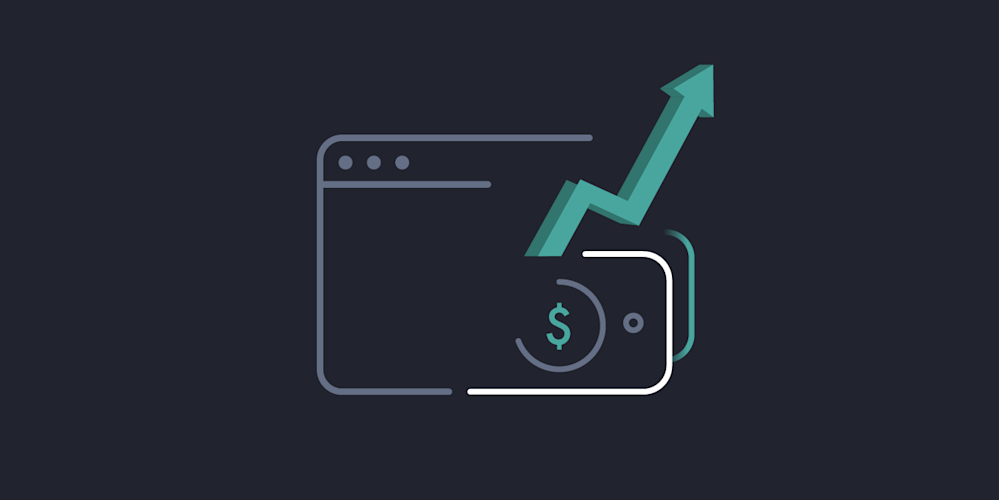
Authentication Solutions Could Save Organizations Millions
From banking and healthcare to shopping and travel, we’ve become accustomed to online transactions. We’ve also come to expect the many frustrations that come with accessing and managing our online accounts. Lost and forgotten passwords, account lockouts and rising cybersecurity concerns seem to be inevitable headaches, not just for consumers, but also for the organizations delivering the digital services we increasingly rely on. That’s why finding and implementing a solid customer authentication solution is a growing priority for IT and security teams as well as business leaders looking to grow their brands and increase revenue.
Liminal, a global market and competitive intelligence firm specializing in cyber fraud and cybersecurity technology solutions, conducted a study to delve deeper into the customer authentication challenges that organizations face and the solutions that address them. The resulting Liminal Link™ Index uncovered a significant correlation between organizations’ customer authentication capabilities and revenue.
According to findings in the Liminal Link™ Index for Customer Authentication, organizations, particularly multinational companies in the financial services and healthcare industries, could potentially save as much as 500 million in US dollars with a leading customer access security solution focused on identity management. Similarly, multinational travel and e-commerce organizations could save up to $200 million by implementing a strong customer authentication solution.
Why Weak Customer Authentication Is So Costly
The staggering dollar amounts that organizations can save with good customer authentication reveals the painfully large revenue amounts that enterprises are losing to outdated or poor customer authentication technologies. Liminal’s research found that companies lose a significant amount of money to expenses incurred by weak or inefficient password management and other authentication capabilities.
For instance, account recovery troubleshooting makes up to 29% of call center volumes. On top of this, the average call center representative spends more than nine minutes assisting each account recovery caller. Plus, login friction results in high customer churn which is the largest source of annual revenue loss adding up to $176 per day, per customer.
Organizations also face considerable losses due to cyber threat activity leveraging unauthorized access. The average cost for successful telephone fraud attacks in which threat actors gain account access over the phone can reach upwards of $1,379 per incident. Plus, successful phishing attacks where cybercriminals gain fraudulent account access via email can cost organizations as much as $6,741 per incident.
How Customer Authentication Reduce Revenue Loss
The Liminal Link™ Index states that secure customer authentication solutions can cut the volume of account access call center requests by nearly half, from 29% to 18%, with support for intuitive passwordless authentication and self-service account recovery. Combined with eliminating the lengthy nature of these calls, the call center labor requirement can be reduced by 60%.
Additionally, a 13% reduction in customer churn is attributed to decreased login friction, seamless account recovery and personalized authentication flows — all capabilities that leading customer authentication solutions provide.
Liminal also found strong cybersecurity advantages and cost savings associated with the adoption of strong customer authentication. For example, the financial services sector has seen a 39% reduction in successful phishing attacks with the use of passwordless, multi- factor authentication (MFA) solutions. With the estimated cost per incident approaching $7,000, this reduction in cybercrime loss can significantly bolster revenue numbers.
Current Adoption Challenges for Improved Customer Authentication
If better customer authentication can have such a dramatic impact on revenue, why has adoption been slow for many organizations? According to the Liminal Link™ Index, the challenge is multi-faceted and includes several major obstacles:
Traditional Account Recovery Methods Fall Short
59% of authentication practitioners aren’t satisfied with the account recovery capabilities of their current customer authentication solutions. This results in a reluctance to make changes that could be potentially disruptive, even if temporarily.
Educational and Technical Barriers Stand in the Way
Organizations often struggle to gain internal stakeholder buy-in for potentially large changes. Decision-makers are concerned about forcing change that would require customers to learn new behaviors, like new login methods. They are also cautious about incurring costs related to introducing new technologies.
Approximately 90% of businesses are willing to transition from passwords to passwordless authentication methods, but only a third of those businesses plan to make the change in the next two years because of education and legacy technology concerns.
Strengthening Security without Impacting Positive User Experiences Can Be Difficult
Security measures can add friction to the user experience, and businesses are concerned about sacrificing one for the other. 49% of businesses prioritize enabling more convenient user experience flows, 51% place greater emphasis on preventing unauthorized access. The conflict between the two can create hesitation as organizations consider updating authentication flows.
Customer Authentication Solutions Continue to Advance
While organizations continue to face adoption challenges and struggle with the shortcomings of traditional customer authentication methods, the industry is moving forward in promising ways. Many authentication vendors are leveraging new standards to help businesses successfully address authentication issues and the difficulties they experience when updating to improved capabilities.
The Liminal study identified three main developments customer authentication solution providers are building on to deliver enhanced technologies:
FIDO2 Passkeys FIDO2 passkeys are emerging as a phishing-resistant replacement for passwords. With FIDO2, the authentication process occurs with hardware-based tools on the user’s device that dynamically generate access credentials with each login. This reduces the need for static credentials that can be easily compromised.
OAuth OAuth 2.0 and OpenID Connect are standardized authentication and authorization protocols. They enable third-party users to request access on behalf of users without exposing credentials and provide a trusted way to verify user identities. In addition to establishing industry-wide trust, these protocols ensure integrations between service, identity and authentication providers.
Auth+ With Auth+ vendors can broaden their capabilities beyond managing daily customer access to include customized user experiences and stronger security measures, like fraud detection and identity verification. The result is consolidated, robust platforms that support emerging orchestration capabilities that enable optimized user authentication flows and third-party integrations.
Meeting Authentication Challenges and Demands
The Liminal Link™ Index compared their research findings with the customer authentication solutions currently available in the market to identify the vendors best poised to meet organizations’ authentication challenges and demands.
Liminal benchmarked 50 customer authentication vendors’ ability to navigate the complexities of security, user experience and scalability in industries such as financial services, healthcare, e-commerce and travel. Among the vendors included in the research, only 15 qualified as leaders in the market, and Curity was ranked as one of these top solution providers.
Curity emerged as a leading vendor building on the latest authentication and authorization protocols to provide innovative CIAM solutions that simplify development and expand secure access capabilities. The company continues to advance emerging protocols to provide organizations with secure authentication capabilities that can be deployed efficiently.
For example, Curity provides passkey technologies using FIDO2. Plus, it offers identity and access management and API access security that leverages OAuth, OpenID Connect and Auth+ protocols for highly customizable authentication solutions that integrate with legacy and future technologies.
In the evaluation, Curity scored high in key areas that Liminal found organizations consider when making customer authentication solution purchasing decisions:
Scalability through extensibility and high traffic stability
Pricing that supports business growth
Developer-centric deployment
AI and machine learning capabilities
Usability through APIs, SDKs, and streamlined integration tools
The Curity Identity Server showed strong ratings across the customer authentication capabilities that can help organizations realize significant benefits according to Liminal. Among those advantages is increased development efficiency, sophisticated scalability, reduced call center account resets, lower labor expenses, less customer churn and stronger cybersecurity.
The conversation around customer access to digital services and resources is no longer only an IT or security discussion. It is expanding into business growth and customer experience.
These considerations are driving new and more intense demands for greater customer authentication capabilities. Industry vendors, like Curity, are rising to the challenge by delivering solutions that address both the business and security contexts of authentication.




